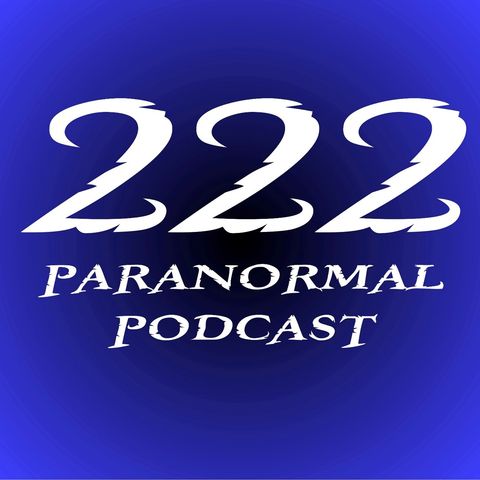Giant Skeletons, Mounds and Hauntings Eps. 335

Download and listen anywhere
Download your favorite episodes and enjoy them, wherever you are! Sign up or log in now to access offline listening.
Description
For centuries the lore and legend of giant skeletons swirled around the archeological and paranormal communities. Tales of mound builders and mound destroyers finding enormous skeletal remains hidden deep with...
show morePlease Click Subscribe/Follow Click here to support the show with a donation Click here to go to the 222 Webpage Click here for Jens Closet Click here for joe's book Other information in this Episode. Workmen in the employ of the Fergusson Construction Company excavating for the new Toledo and Ottawa Beach Railroad, a little beyond the city limits of Toledo, Ohio, unearthed three skeletons, evidently relics of some great race, as they were about seven feet in length. Just where the ears should be on the head are singular bony protuberances which curl forward. The finds were made in solid yellow clay about eight feet below the surface. The cut is through a large mound, not half of which has yet been torn up. Several stone tomahawks of large size have been picked up in the locality. A mound near Toledo, Ohio held 20 skeletons, seated and facing east with jaws and teeth “twice as large as those of present-day people” and beside each was a large bowl with curiously wrought hieroglyphic figures. The Hocking sentinel. Logan, Ohio, April 28, 1898, pg 2 Toledo 3 Giant Skeletons Research done by Rephaim23 Alexandria Gazette, Alexandria D. C. October 26, 1895 Cayuga Chief, 30 April 1898, pg 1. American Antiquarian, Volume 3., 1880. ‘twice as large”. TIFFIN, Nov. 18. — While engaged in excavating a cellar on Webster Street the workmen exhumed a mammoth skeleton, indicating that the individual who formerly possessed the osseous frame- work was over seven feet in height Whether it was that of a white man or an Indian could not be definitely ascertained, as most of the bones crumbled soon after being exposed to the air, and before they could be examined by those conversant with the methods of distinguishing the skeletons of the aborigines from those of their white brothers. Certain it is that the remains had been interred so long as to spoil every chance for a sensation based upon some half traditional or wholly mythical tragedy. Springfield, O., April 7.—A giant skeleton of a man has been unearthed on the Woolverton farm, a short distance from Tippecanoe City. It measures eight feet from the top of the leg to the ankles, the feet being missing. The skull Is large enough to fit as a helmet over the average man’s head. This skeleton was one of seven found buried In a circle, their feet being pointed toward the center. Crude implements were near. The skeletons are thought to be those of mound builders. Si-Te-Cah According to Northern Paiute oral history, the Si-Te-Cah, Saiduka or Sai'i are a legendary tribe whose mummified remains were allegedly discovered under four feet of guano by guano miners in what is now known as Lovelock Cave near Lovelock, Nevada, United States. Although the cave had been mined since 1911, miners did not notify authorities until 1912. The miners destroyed many of the artifacts, but archaeologists were still able to retrieve 10,000 Northern Paiute artifacts from the cave. Items included tule duck decoys, sandals, and baskets, several dating back over 2,000 years. Oral history According to the Northern Paiutes, the Si-Te-Cah were a red-haired band of cannibals. The Si-Te-Cah and the Paiutes were at war, and after a long struggle, a coalition of tribes trapped the remaining Si-Te-Cah in Lovelock Cave. When they refused to come out, the Paiutes piled brush before the cave mouth and set it aflame. The Si-Te-Cah were annihilated. Sarah Winnemucca, daughter of Paiute Chief Winnemucca, wrote about what she described as "a small tribe of barbarians" who ate her people in her book Life Among the Paiutes: Their Wrongs and Claims. She wrote that "after my people had killed them all, the people around us called us Say-do-carah. It means conqueror; it also means 'enemy.' My people say that the tribe we exterminated had reddish hair. I have some of their hair, which has been handed down from father to son. I have a dress that has been in our family for a great many years, trimmed with reddish hair. I am going to wear it sometime when I lecture. It is called a mourning dress, and no one has such a dress but my family." Winnemucca does not mention giants.
Information
| Author | Joe |
| Organization | Joe |
| Website | - |
| Tags |
Copyright 2024 - Spreaker Inc. an iHeartMedia Company

Comments